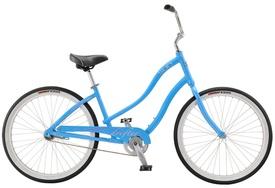Discussion- Dumbbell Flyes
Options
Replies
-
for_ever_young66 wrote: »OP, who is saying what about DF? I'd love some solid info!
I've heard it from quite a few sources but this one had me thinking. This dude talks like he knows what he's talking about. Kind of spooked me to be honest. Fast forward video to about a 1 minute and 20 secs. https://www.youtube.com/watch?v=O6Y3WDY1tUo
https://www.youtube.com/watch?v=O6Y3WDY1tUo
I watch his channel more than anyones. He actually puts science behind what he says.3 -
I would argue that dumbbell flys are safer than any pressing type chest shoulder machine that doesn't allow your body to naturally adapt to the movement because its set by design. Every time I see someone squat in the smith machine I cringe seeing their knees bend a foot past their toes..0
-
Cherimoose wrote: »for_ever_young66 wrote: »Well, one of the gripes against it is that it doesn't really grow your pecs as advertised and you risk injuring your shoulder, namely the rotator cuff.
The DB fly has a steep resistance curve, meaning the DBs feel very heavy at the bottom of the movement, and progressively feel much lighter toward the top. That's not really ideal for growth, because only a small portion of the range of motion has a lot of resistance. A seated machine fly or cable pec fly has a smoother tension curve, so that would be my choice. Those don't work the stabilizer muscles as much, so the pecs can do more actual work.
Recently been doing my flys bottom half of movement only so not taking elbow above shoulder this reduces the stress on rotator cuff and u still get most effective part of the movement
You know. I'm going to try this. Thanks for the suggestion.
0 -
Thanks everyone. Good stuff. I have enough good feedback to work with.0
-
Michael190lbs wrote: »I would argue that dumbbell flys are safer than any pressing type chest shoulder machine that doesn't allow your body to naturally adapt to the movement because its set by design. Every time I see someone squat in the smith machine I cringe seeing their knees bend a foot past their toes..
I have to disagree with you when it comes to most machines. Since we are talking about fly's, the peck deck is a safer choice, and does not impede range of motion.1 -
Recently been doing my flys bottom half of movement only so not taking elbow above shoulder this reduces the stress on rotator cuff and u still get most effective part of the movement
My understanding is the rotator cuff is under the most stress when the elbow goes behind the shoulder. The head of the humerus (arm bone) basically wants to pop out of the shoulder socket at that point, and the rotator cuff muscles work hard to keep it in. This seems to be why some people get shoulder injuries when they bench press the same way, with their elbows below shoulders. 0
0 -
Michael190lbs wrote: »I would argue that dumbbell flys are safer than any pressing type chest shoulder machine that doesn't allow your body to naturally adapt to the movement because its set by design. Every time I see someone squat in the smith machine I cringe seeing their knees bend a foot past their toes..
I have to disagree with you when it comes to most machines. Since we are talking about fly's, the peck deck is a safer choice, and does not impede range of motion.
I agree on the Peck deck great Machine I figured chest exercises which is why I specifically said Pressing machines
0 -
Cherimoose wrote: »Recently been doing my flys bottom half of movement only so not taking elbow above shoulder this reduces the stress on rotator cuff and u still get most effective part of the movement
My understanding is the rotator cuff is under the most stress when the elbow goes behind the shoulder. The head of the humerus (arm bone) basically wants to pop out of the shoulder socket at that point, and the rotator cuff muscles work hard to keep it in. This seems to be why some people get shoulder injuries when they bench press the same way, with their elbows below shoulders.
 https://www.youtube.com/watch?v=vthMCtgVtFw 0
https://www.youtube.com/watch?v=vthMCtgVtFw 0 -
So, in engineering, you'll find that the people who bark the loudest are usually the ones who have the least to say. I get the idea its the same in fitness. Lots of bro-science going on.
Incline flies are simply a way to instill stress on your muscle.
Also from engineering: if the stress on a material exceeds it ultimate strength rating, failure occurs.
Muscle is no different. You could blow up our chest from dumbells, cables, peck deck, or anything that exceeds the capacity of your muscles to make the material fail. This is strain or tearing, which leads to a lot of pain.
Practical experience is from a wrestling match in highschool where I ripped my peck from holding the other guy who had Clydesdale like strength, in a cradle until something ripped. So...if your avoiding dumbells, avoid wrestling too. Just sayin'!0 -
So, in engineering, you'll find that the people who bark the loudest are usually the ones who have the least to say. I get the idea its the same in fitness. Lots of bro-science going on.
Incline flies are simply a way to instill stress on your muscle.
Also from engineering: if the stress on a material exceeds it ultimate strength rating, failure occurs.
Muscle is no different. You could blow up our chest from dumbells, cables, peck deck, or anything that exceeds the capacity of your muscles to make the material fail. This is strain or tearing, which leads to a lot of pain.
Practical experience is from a wrestling match in highschool where I ripped my peck from holding the other guy who had Clydesdale like strength, in a cradle until something ripped. So...if your avoiding dumbells, avoid wrestling too. Just sayin'!
No one said to avoid dumbells. You're right, you can get injured doing any exercise. However, you can not leave out how human anatomy works. Why do dumbbell fly's which has a higher risk of injury, when I can I can do cable fly's or use the peck deck? There is risk in everything you do. However, there is more than one way to skin a cat. Risk vs reward.2 -
OK ummm i do my pec dumbell flys lying on a yoga mat on the ground, impossible to over stretch that way. I can attest you can hurt yourself by over stretching in the opposite direction, like I did when using wall mounted resistance bands last year. I over stretched and popped a rib out. Don't do that by the way. Lie on the floor, the floor is your friend. Of course I'm talking home workouts with no access to gym machinery.4
-
for_ever_young66 wrote: »OP, who is saying what about DF? I'd love some solid info!
I've heard it from quite a few sources but this one had me thinking. This dude talks like he knows what he's talking about. Kind of spooked me to be honest. Fast forward video to about a 1 minute and 20 secs. https://www.youtube.com/watch?v=O6Y3WDY1tUo
https://www.youtube.com/watch?v=O6Y3WDY1tUo
I watch his channel more than anyones. He actually puts science behind what he says.
I agree. Jeff Cavaliere is a bit of a bro but he's big on injury prevention, and is very well versed.
1 -
I can't go too far out or heavy due to rotator cuff/ligament damage from sports. Then again, that pretty much goes with any shoulder-centric workout.0
Categories
- All Categories
- 1.4M Health, Wellness and Goals
- 391.5K Introduce Yourself
- 43.5K Getting Started
- 259.7K Health and Weight Loss
- 175.6K Food and Nutrition
- 47.3K Recipes
- 232.3K Fitness and Exercise
- 391 Sleep, Mindfulness and Overall Wellness
- 6.4K Goal: Maintaining Weight
- 8.5K Goal: Gaining Weight and Body Building
- 152.7K Motivation and Support
- 7.8K Challenges
- 1.3K Debate Club
- 96.3K Chit-Chat
- 2.5K Fun and Games
- 3.2K MyFitnessPal Information
- 22 News and Announcements
- 926 Feature Suggestions and Ideas
- 2.3K MyFitnessPal Tech Support Questions







